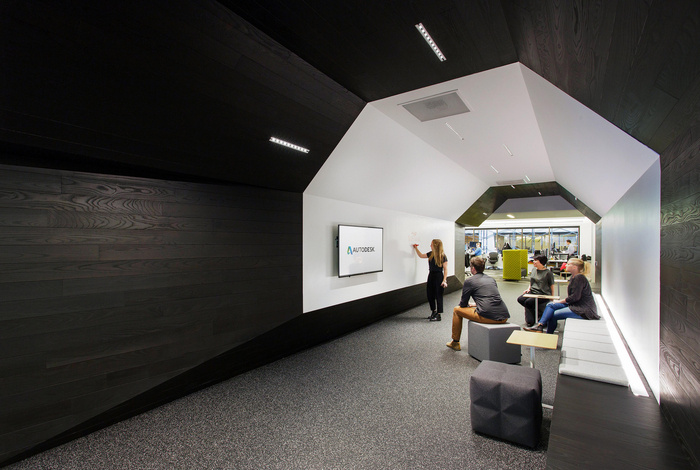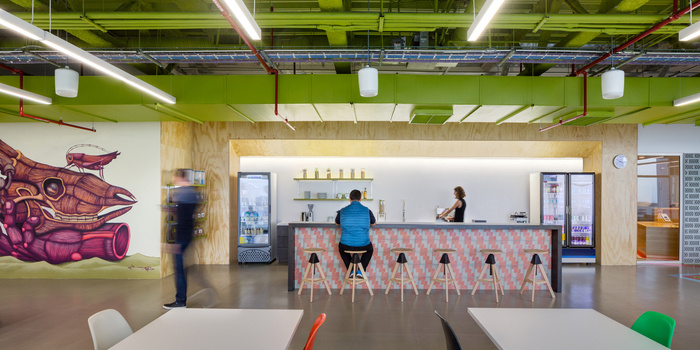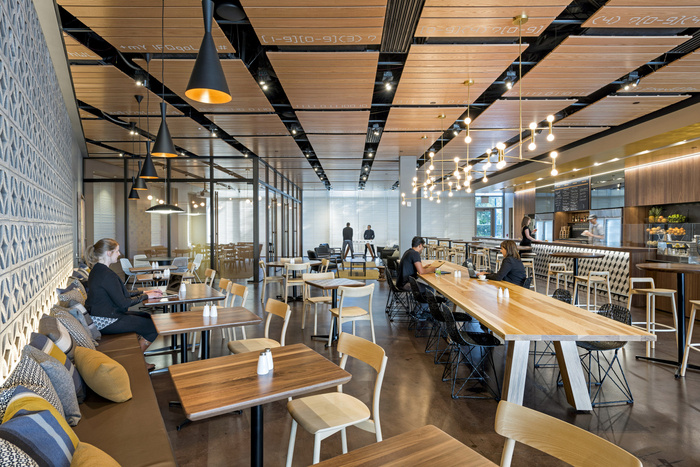
The Workplace of The Future: An Interview with Natalie Engels, Design Director of Gensler San Jose
The Workplace of the Future is a editorial series of interviews investigating what the future may have in store for office design.
We recently spoke with Natalie Engels, Design Director of Gensler San Jose who helps us think through and imagine the Workplace of the Future, as well as how the firm works to help clients create an environment which is not only considerate of the past, but prepared for the future.
—
When you think about the phrase, The Workplace of the Future, what ideas immediately come to mind?
Natalie Engels: In the near future I envision a workplace that will take human psychological needs into consideration, such as our innate desire to connect with nature as well as our need to find meaningful experiences and interactions with others every day – all to help produce our best work. Beyond just the balance of individual and quiet spaces where people can focus or group spaces where people can connect – I envision a stronger connection to the human spirit and what we need to thrive.
In the distant future, I see it more as a mix of tactile and digital experiences, such as humans interacting with holograms. I hope it will be the best of both worlds. Advances in technology will allow for increased efficiency through robots, the utilization of new tech tools to customize spaces, and virtual connect rooms that will allow for interaction with friends and family for lunch. It will be a place that encourages human connections so we can all grow and thrive.

Autodesk’s San Francisco Offices by Gensler
Photo by Jasper Sanidad
Is it helpful to think about the future when designing an office in the present? What might this look like for a client of Gensler?
NE: We absolutely think about the future when designing offices today. GenZ (otherwise known as digital natives) will be in the workplace in 10 years, so the places we are designing today will welcome them into the workforce. Interestingly, at Gensler, we’re very familiar with how this generation thinks due to our work in our education practice area – there is nice crossover among our teams. How today’s student learns and what they expect from their environment can be applied to current and future workplace design. I myself, am raising a digital native and I frequently ask her what she thinks in certain scenarios, what tools she needs to learn, how she wants to connect with her classmates and the world. It’s important to design to invite their participation – making the interaction between digital and physical space seamless. If we embrace their curiosities and their exploration within the digital world while applying our expertise and knowledge we can create something wonderful.

Facebook’s Mexico City Offices by Gensler
Photo by Rafael Gamo
If we looked at images of office interiors from 100 years ago, they look very similar to offices today with people sitting around doing work at rows of desks. Has office design really changed very much over time? Will the Workplace of the Future be much different?
NE: In some ways it resembles the office landscape of years ago in that you sit by one another at desks, but in many ways it is completely different. What makes it different is the evolution of humans at work, what we are trying to achieve, workforce demographics – diversity in age, race and gender – and our understanding of what the human body needs throughout the day. We also know more about personality types and what kind of spaces bring people joy and encourage their ability to succeed.
Today’s Innovative companies provide places where employees can do their best work. Employees are not tied to a single desk or enclosed behind a door – they can work in a quiet or collaborative space, in a café, or a public space. Having a choice is a noticeable difference from 100 years ago. Allowing for preference in how employees can produce the best results, and providing the flexibility of technology has dramatically impacted the way we design workspaces. Will the future be much different in 100 years? I hope so. But because we are human, and change is hard for many of us, I predict it will be more gradual, allowing for people to adapt.
Will the Workplace of the Future be shaped primarily by technological change or by changes in people’s thinking and attitudes? Or both?
NE: Definitely both. As the world of technology evolves so do we, and it’s important that our minds and attitudes keep pace with these changes. Companies need flexibility both in mindset and financially to accept or reject new hardware and software that adapts at the pace we need it to.

Symantec, Union 82 Gastropub in Mountain View by Gensler
Photo by Jasper Sanidad
What are some significant changes that have happened in the workplace during the last 15 years that can help us better envision and plan for what the future might hold?
NE: When I moved to California in 2001 there were two types of workspace (and all had a styling based on the current decade’s trend): A more formal set up with high-end refinement and detailing for professional service firms, and a more temporary mentality for tech. Within tech, many companies purchased buildings meant to be temporary as they didn’t know if their company would flourish or fail. Employees were given 2-3 options for their day – work in a cubical or office and when you needed to meet with someone, go to a large conference room. All spaces were identical with very little access to daylight, a small room to heat up your food and a drip coffee pot. This is where we have made huge strides in office design, incorporating health and wellness components and amenity spaces where people can curate their daily experiences. The 2016 Gensler U.S. Workplace Survey found that innovative employees have two times more access to amenities, with the top spaces being cafés, restaurants and outdoor spaces.
We have taken the best of what makes us human and what we need within space to breathe new life into what was once very bleak. This includes balancing the workplace to offer variety of room types, opening up ‘break rooms’ to become gathering spaces for celebrating culture and connection with one another outside of work tasks, allowing natural light to flow within space, and giving people not only prospect but refuge. What we cannot fully anticipate is what technological game changers will emerge and how they will revolutionize the workplace.
Do you have any additional thoughts about The Workplace of the Future that you’d like to share?
NE: In the West, we are seeing three Meta Trends, and it all comes down to being true to who you are – that is at the heart of workplace today. The three trends are 1) Deliberately Experiential – this is about the personal journey each day – from the first cup of coffee to the last meeting, what is your employee experiencing and what message is your space sending to them? 2) Simply Refined, Tech companies were once the playful rebels, but now they are leading the world’s economy, so they have refined themselves – not to the point of being untrue to who they are – but with confidence and boldness in what they do for the world. And 3) Socially Conscious – across generations people are highly conscious of their place in the larger community. They want to be connected to the community by offering co-working space, choosing locally made products, embracing local artists and small businesses within the direct community. It is not just about having a café and fitness center – physical wellness is an important aspect, but what are you doing to ensure emotional, mental, spiritual and social wellness?


























